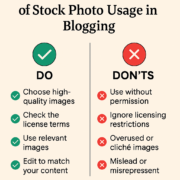Optimizing Your SEO: 6 Effective Rank Tracking Techniques
Making your online presence known is crucial to survive in the vast digital landscape. Everyone needs to understand and improve your website’s ranking, whether you’re a small business owner, a blogger, or a marketer. It makes you visible on search engine results and lets consumers know if you offer the relevant services they seek.
Fortunately, by implementing appropriate tools, platforms, and processes, you can track the performance of your website. It helps the development of a successful keyword research strategy that delivers consistent results as time progresses.
This article delves into effective SEO rank-tracking techniques. Get ready to discover essential methods to track and improve your search engine rankings effectively.
SEO Ranking-How it Works
Rank tracking is the process of monitoring where your website lands on the search engine results page for specific keywords. It’s a cornerstone of SEO strategy because it directly impacts your site’s visibility.
For instance, users looking to buy shoes may search for the best shoes for men. If you are a shoe seller and don’t focus on the relevant keyword, the search engine will never show your product on the first page.
It means you must focus on applying modern ranking techniques. Higher rankings mean more exposure to potential customers, leading to increased traffic and conversions. By keeping tabs on your rank, you can gauge the effectiveness of your SEO efforts and adjust your strategy to target your audience more precisely.
1. Rank Indexes
Rank indexes collect your website’s positions across various search engines for multiple keywords. To use this method, list keywords relevant to your site and track their rankings at different intervals of time.
This approach helps identify which keywords boost your visibility and which need more work. By improving your rankings for specific keywords, you can enhance your site’s overall visibility.
2. Getting Rank Index Data
For beginners, finding rank index data might seem daunting, but it’s quite straightforward. Start with keyword research tools that offer insights into where your website stands in search results.
These tools often provide a detailed analysis of your site’s performance, including fluctuations in rankings. However, regularly checking this data allows you to identify trends, grasp the effects of your SEO strategies, and adapt your approach to gain visibility among users.
3. Automated Ranking Trackers
Rank tracking tools are essential for anyone looking to optimize their SEO. If you are a beginner looking to track your website’s ranking, you can rely on these tools without help. They not only show where your site ranks for specific keywords but also offer insights into your competitors’ rankings and the effectiveness of your SEO strategies.
For example, the Serpple rank tracking tool allows users to monitor keyword performance and compare rankings over time. Users can quickly identify opportunities for optimization. These tools often come with additional benefits, such as keyword suggestions and SEO performance analysis. It is an invaluable method for improving their site’s search engine visibility.
4. Google Search Console
Google Search Console is a powerful method for web admins. It provides detailed insights into how Google views your site. These views include which queries bring users to your site and how often your pages appear in Google search results. It also provides details about how users interact with your content.
This information is critical for understanding your site’s performance and identifying areas for improvement. By optimizing your pages based on this data, you can increase your relevance in search results and attract more targeted traffic to your site.
5. Google Analytics
Google Analytics complements Google Search Console by offering more profound insights into your website’s traffic and user behavior. While it doesn’t directly show keyword rankings, it reveals the results of your SEO efforts in terms of site visits, engagement, and conversions.
Analyzing this data lets you understand which keywords and pages drive the most valuable traffic to your site. This understanding can guide your content strategy, helping you focus on topics that resonate with your audience and drive results.
6. Manual Search
Manual search involves directly querying search engines to see where your pages rank for specific keywords. Although this method is more time-consuming than using automated tools, it provides a clear, immediate picture of your site’s performance.
Performing searches in incognito or private browsing mode can help avoid personalized results, offering a more accurate picture of your rankings. Despite its simplicity, manual search is an effective way to measure the impact of your SEO efforts quickly.
Conclusion
Tracking your SEO rankings helps you understand and improve your online visibility. You can get a comprehensive view of your site’s performance by employing a mix of rank-tracking techniques, from automated tools to manual searches. Remember, SEO is a continuous process; staying vigilant about your rankings is vital to growing your online presence.




